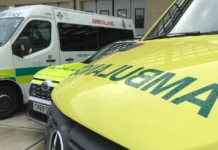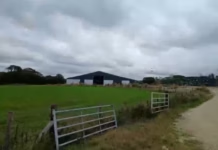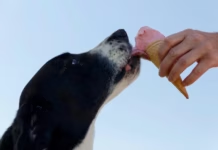75% of dog owners expressed their intent to take their dog on staycation this year, as pooch parents and their road dogs head on journeys across the UK¹
Dr. Emma Scales-Theobald, canine behaviourist, and resident dog expert at Canine Cottages, has revealed her top tips for travelling with your pooch in the car, and on public transport
Dr. Emma says dogs can show their enthusiasm for travelling to a destination by “wagging their tail, moving around a lot, and panting”
Three-quarters (75%) of dog owners said they intended to take their dog on staycation this year¹ however, if you’re dog isn’t used to travelling in the car, or on public transport, how do you go about creating a stress-free travel experience?
To offer dog owners some helpful tips, dog-friendly holidays brand Canine Cottages, have shared some travel insights from their resident dog expert and canine behaviourist Dr Emma Scales-Theobald about travelling with your pooch this autumn.
1. When travelling by car make sure your passenger pooches are secure and comfortable
When travelling with your pooch, it’s important that they are both comfortable and secure to prevent any driving distractions. Regarding the best place to put your pooch in the car, Dr Emma said: “The back seats or the boot of your car are best for your dog to travel in for their safety and to prevent distractions to the driver. When travelling with a dog in your car, it’s crucial to ensure they are properly secured for the safety of both you and your pet. It is also part of the Highway Code (rule 57) that they are suitably restrained.”
“A crate or pet carrier can be an ideal way for many dogs to travel in a car. It can provide a comfortable space they feel safe in and can help many crate-trained dogs feel more relaxed about travelling. You can also use a dog seat belt, which is a convenient way to travel with your dog in the car. It’s recommended that this is attached to a harness, not the dog’s collar, if possible, to help reduce the likelihood of serious injury in the case of an accident.”
2. Build paw-sitive association for travel with calming treats
Whether travelling via car or public transport your dog must build positive association with their environment. Dr Emma recommends that to help your dog feel calmer with travelling you should consider playing relaxing music, using calming products, such as treats and having them wear a compression jacket. If your dog is small enough, try to keep them in a pet carrier while travelling to help them feel safe.
“Practise making small, enjoyable journeys at first to help build their confidence. If you have time, try to give them a good run or long walk before a journey to help get rid of pent-up energy and encourage them to sleep during the journey.”
3. Train your dog with basic commands such as ‘leave it’
Public transport can often be extremely busy at peak times therefore Dr Emma recommends teaching your dog to follow commands on where to move and to sit or lie in tight spots. She continues: “Training your dog to stop barking on command can also be handy on public transport to help bring their focus back to you if they have a tendency to bark at things like other dogs, bikes or children etc.
“It’s important to also teach your dog that they don’t have to greet everyone. Some people do not like dogs or are afraid of them. But also, this can help your dog to stay relaxed. Training the ‘leave it’ command and to focus on you can really help with this.”
4. If your pooch is prone to travel sickness, feed them an hour or two before you leave
Most of us have experienced the familiar feeling of travel sickness, but did you know that dogs can experience this too? Dr Emma recommends watching out for excessive panting, drooling, retching and lip licking, when in the car.
She said: “Often, travel sickness is linked with anxiety. Make sure to slowly build their confidence on manageable short journeys and steadily increasing the distance over time will also really help. Also, leaving an hour or two before travelling after feeding your dog will help give their stomachs time to digest the food and reduce the chances of them being ill.”
5. Pack the essentials
Being packed and prepared ensures that you and your dog will have a stress-free and easy journey. Dr Emma recommends packing the following when heading on a trip away:
Dog food – A sudden change in your dog’s diet will cause your dog to have a very upset stomach.
Treats – Many dogs can cope with different treats, but those with sensitive stomachs will probably prefer their usual treats from home as well.
Water – Make sure to take enough water with you as well.
Water bowl – Some dogs are fussy about what they drink out of and won’t like sharing water bowls where they can smell what other dogs have used.
Travel mat – Bringing a travel mat can be handy for giving your dog somewhere comfortable to lie when you stop to eat.
Poo bags – Having them handy and ready is always important on journeys.
Pet first aid kit
Toys – This can be comforting for your dog, they smell like home, and provide a fun distraction.
Do dogs get excited about their travels?
Dr Emma reveals your dog may be telling you how excited they are for their travels by wagging their tail, moving around a lot and panting. She said: “Dogs are very clever and quickly build associations. They can recognise that using the car or public transport can mean you’re going somewhere fun and get excited.”
For further wag-tastic travel tips, read this guide to travelling with your pet.

| [donate]
| Help keep news FREE for our readersSupporting your local community newspaper/online news outlet is crucial now more than ever. If you believe in independent journalism,then consider making a valuable contribution by making a one-time or monthly donation. We operate in rural areas where providing unbiased news can be challenging. |



















